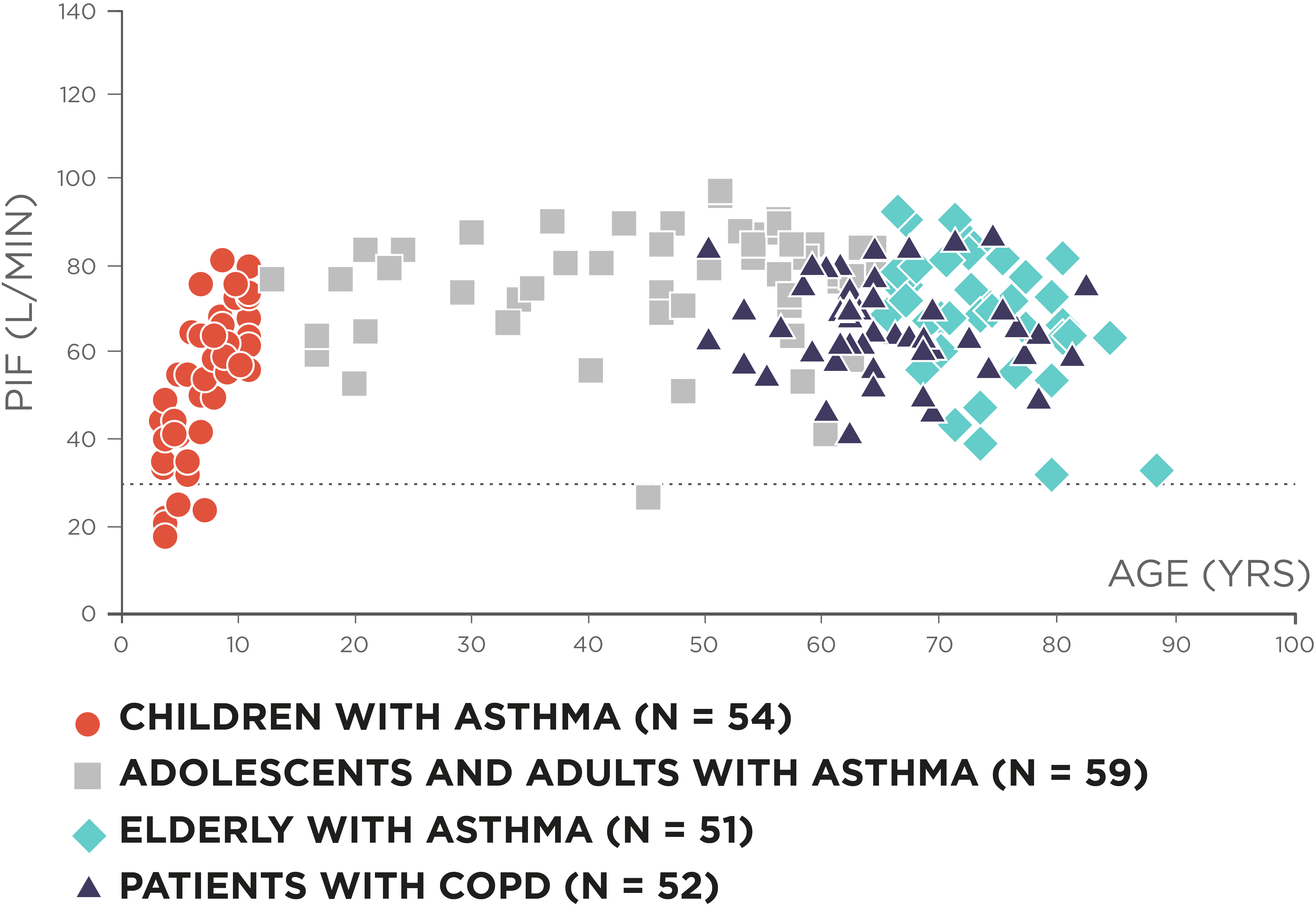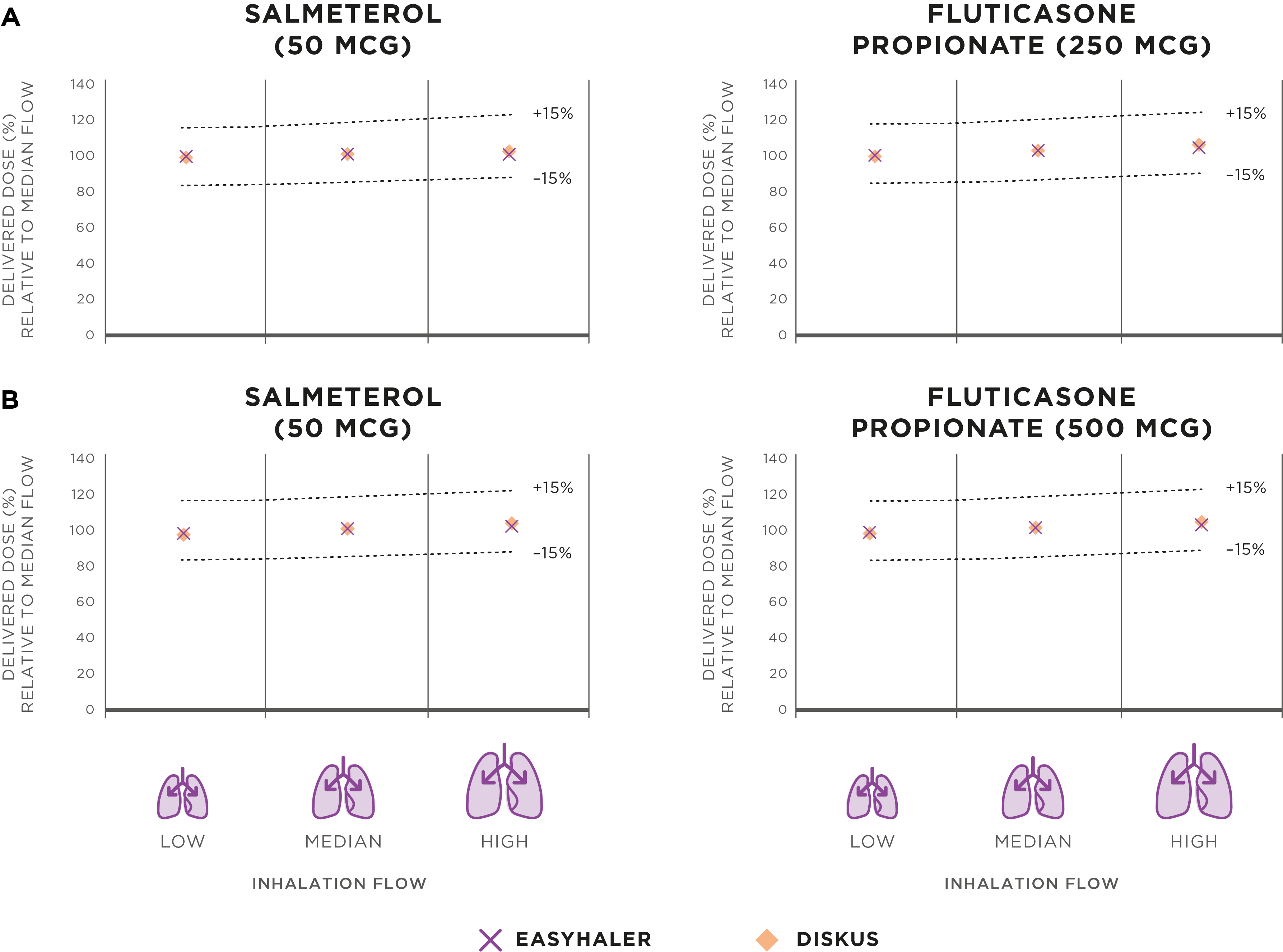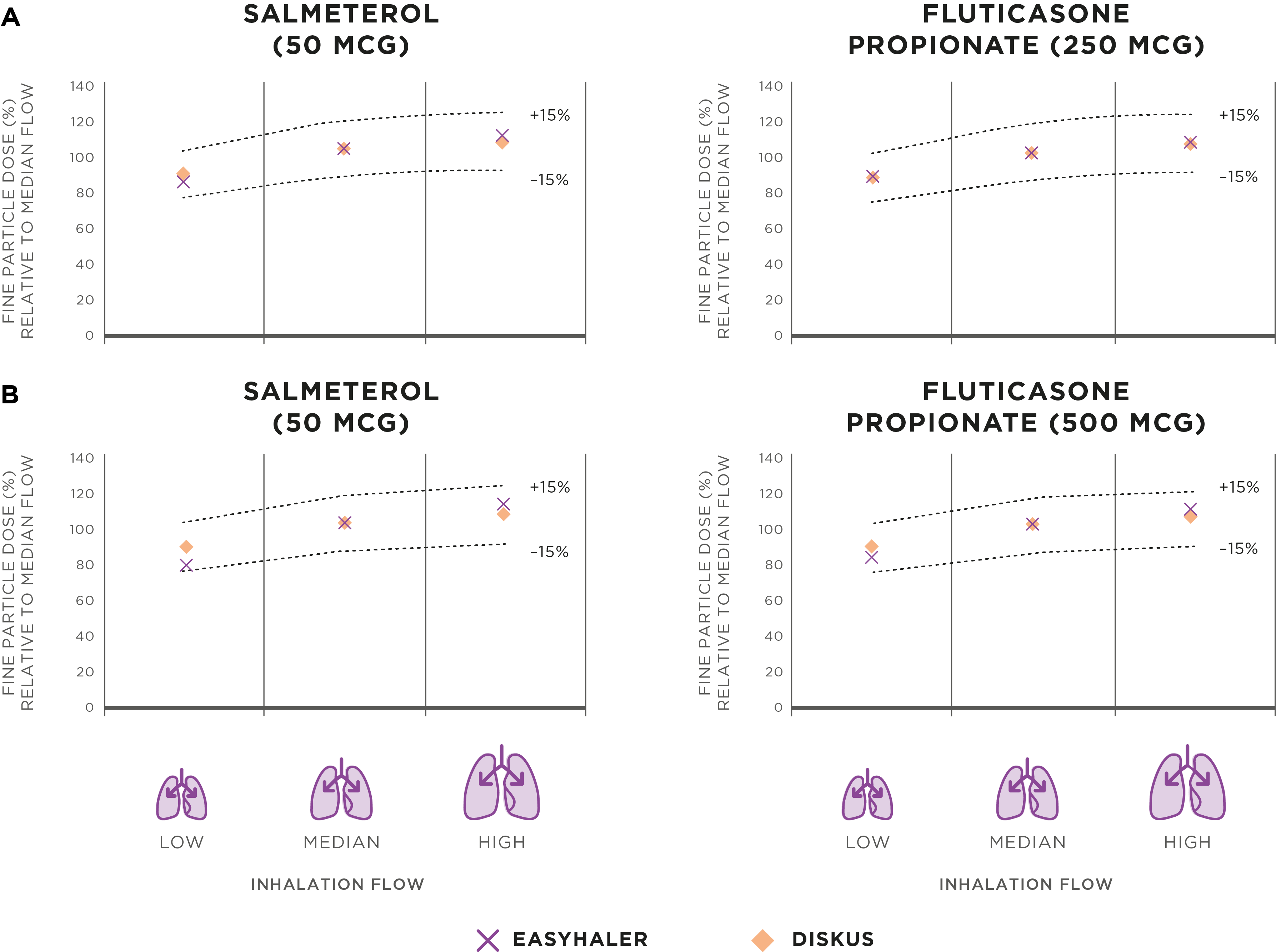In vitro flow rate dependency of delivered dose and fine particle dose of Salmeterol/Fluticasone Propionate Easyhaler® and Seretide Diskus® with patient flow rates collected in a randomized controlled trial
Publikationer | 08-05-2019Study summary:
In vitro flow rate dependency of delivered dose and fine particle dose of Salmeterol/Fluticasone Propionate Easyhaler® and Seretide Diskus® with patient flow rates collected in a randomized controlled trial.
Jõgi et al. 2018. JAMP
- In vitro flow rate dependence of delivered dose (DD) and fine particle dose (FPD) of Salmeterol/Fluticasone Easyhaler® and Seretide Diskus® was assessed across a range of clinically relevant flow rates in patients with asthma or COPD.
- The lung deposition characteristics of Salmeterol/Fluticasone Easyhaler® – flow rate dependence of DD and FPD – were similar to the originator product Seretide Diskus®.
- The inhalation flow rates did not substantially influence the dosing characteristics of Salmeterol/Fluticasone Easyhaler®.
The clinical effectiveness of dry powder inhalers (DPI) is influenced by various factors, such as inhalation flow generated by the patient, resistance to air flow within the device, accuracy and consistency of dosing in various patient inhalation flows, and dose linearity at different dose strengths. The aim of this study was to assess the in vitro flow rate dependence of DD and FPD of Salmeterol/Fluticasone Easyhaler® and to compare it to the originator product Seretide Diskus®.
Inhalation flow rates (L/min) of 164 patients with asthma (children, adolescents, adults, and elderly) and 52 patients with COPD were measured by spirometry as peak inspiratory flow (PIF). In the subsequent in vitro study, a low (10th percentile), median (50th percentile), and high (90th percentile) of collected flow rates were used to evaluate the flow rate dependence of DD and FPD. The flow rate dependencies were determined as relative to median flow (percentage) at product strengths of 50/250 µg and 50/500 µg/dose. In total, 72 inhalers from two batches of Salmeterol/Fluticasone Easyhaler and 84 inhalers from two batches of Seretide Diskus were used in the in vitro study.
The results demonstrated that almost all adult and adolescent patients with asthma reached a PIF rate of 30 L/min or higher (Figure 1). Further evaluation of the collected flow rates showed that the flow rate dependence of DD (Figure 2) and FPD (Figure 3), across the 10th, 50th, and 90th percentile air flow rates of Salmeterol/Fluticasone Easyhaler, were similar to Seretide Diskus. In addition, DD and FPD were largely independent of flow rate for both dose strengths, indicating that dosing characteristics were not significantly influenced by inhalation flow rates.

Figure 1. Individual PIF rates in patients with asthma or COPD for Salmeterol/Fluticasone Easyhaler. N = 216. Note: Children (4-11 years of age) are not included in the indication for Salmeterol/Fluticasone Easyhaler.*

Figure 2. Flow rate dependence of delivered dose (DD) of Salmeterol/Fluticasone Easyhaler and Seretide Diskus. 10th, 50th, and 90th percentile air flow rates for Salmeterol/Fluticasone Easyhaler were 46, 68, and 85 L/min, and for Seretide Diskus 44, 71, and 96 L/min.

Figure 3. Flow rate dependence of fine particle dose (FPD) of Salmeterol/Fluticasone Easyhaler and Seretide Diskus. 10th, 50th, and 90th percentile air flow rates for Salmeterol/Fluticasone Easyhaler were 46, 68, and 85 L/min, and for Seretide Diskus 44, 71, and 96 L/min.
This study demonstrated overall similar in vitro flow rate dependence of DD and FPD between Salmeterol/Fluticasone propionate Easyhaler and Seretide Diskus, using clinically relevant flow rates collected from the patients with asthma and COPD. The results suggest that the lung deposition characteristics are similar between both products, and that the inhalation flow rate does not substantially influence the dosing characteristics of Salmeterol/Fluticasone Easyhaler.
*Salmeterol/Fluticasone Easyhaler® 50/250 and 50/500 µg. SmPC. Orion Pharma

